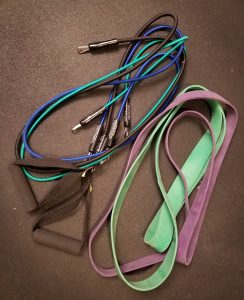You’ve most likely heard it said that sitting is the new smoking. If you are chronically spending a large portion of your day in a seated position, it has been theorized that you are shortening your lifespan, much like a pack-a-day habit.
With sitting comes inactivity. While your fingers might be pecking away at a keyboard, or your thumb might be working a TV remote, the lack of any appreciable mobility leaves your body sluggish. And since regular movement is the spark that ignites so many of your bodily systems, robbing your body of regular movement leaves you in a state of disrepair.
We know that consistent exercise is great for your joints, bones, and muscles, and that it is essential to building cardiovascular health. But there is so much more to it. Regular movement helps to eliminate harmful toxins by stimulating your lymphatic drainage system. Exercise helps to keep your digestion regular. Consistent, varied movement is critical to fending off cognitive decline. Exercise has proven more effective than medication or therapy in the treatment of chronic depression. Simply put, we are meant to move.
There is nothing inherently wrong with sitting. But when the demands of today’s tech driven world require that most of your day is navigated from your seat, things quickly begin to break down.
So what’s a modern human to do?
Try these 5 simple practices to help make your sitting time a little less injurious.
Get Up and Move

I know, it’s obvious. But if your job requires that you sit for the bulk of your day, getting out of your chair to work in some movement goes a long way toward offsetting the negative effects of chronic sitting. The good news is that the beneficial effects of moving come with little effort. A recent study by the Columbia University Medical Center found that a 5 minute walk for every 30 minutes in a seated posture was enough to neutralize the adverse effects of prolonged sitting. Set a timer and get out of your seat. If you’re worried about losing 5 minutes of work time, you might be surprised to find that a short burst of physical stimulation will likely enhance your productivity.
Consider Using a Physio Ball
There are some great office chairs out there that offer supportive cushioning and firm lumbar accommodations. But reaping the benefits from even the best seating requires that you remain firmly planted against its support. As an alternative, you might consider working at your desk while sitting on a yoga ball. That is, provided that your can still access your keyboard, mouse, and monitor with good ergonomics. Otherwise, you’ll just be trading one problem for another.
One advantage to using a yoga ball is that even when sitting still on it, the stabilizing muscles in your lower back, hips, and pelvis are more actively engaged. You don’t have the luxury of just slumping back into your chair. Practiced with consistency, this muscle stimulation translates into healthier overall posture, whether on the ball or not.
In addition, utilizing a ball as a substitute for a chair enables you to incorporate movement into your seated posture. Simple moves like tilting your pelvis forward and back, swiveling your hips in circles, and rocking from side to side help to maintain fluidity in your spine and its supporting soft tissue.
Work Outside

If you work from home, why not take your work outside?
If it’s feasible to do so, simply taking your work out onto your deck or patio can positively impact your health and well-being. The exposure to fresh air and sunlight can help boost your mood and give you a healthy dose of vitamin D. A device like this one, while it might look a little goofy, can help to eliminate the annoying screen glare that comes with working outdoors on a laptop.
Sometimes just the change in environment is enough to shift your attitude and mindset in a positive direction. Spending more of your waking hours outside can also help you sleep better at night. So if you have to sit, try doing so outdoors whenever possible.
Sit on the Floor

Instead of sitting on the couch or a recliner at home, try getting into the habit of sitting on the floor.
There are a couple of advantages to sitting on the floor.
First, sitting in the same chair all the time can be like wearing a cheap pair of shoes. Instead of giving your body support where it needs it, couches and recliners often succumb to your body’s imbalances, which only serves to perpetuate the problem. This is the telltale divot that you’ll see develop in the back support and the seat cushion. What you think is a breaking in of your seat is actually a breaking down.
Secondly, sitting on the floor encourages movement. While it can be easy to spend a couple hours lounging in a recliner, sitting unsupported on the floor compels you to change positions frequently. During a 30 minute television program, you might change positions 10 times – from sitting cross-legged, to leaning back on your hands with your legs outstretched, to sitting on one butt cheek then the other, to a kneeling position, etc.
Since You’re on the Floor Anyway…Do Some Stretching
One of the best ways to utilize TV time is to stretch while you’re watching. A 30 minute session of mobilization including stretching, foam rolling, lacrosse ball work, etc. is one of the most effective ways to offset the stress and tension that invariably accumulates day to day. Stretching after dinner, when you’re probably watching some TV anyway, is a great time to wind down and relax before bed.
If you are one of those people who says they can’t find the time to exercise, there it is, right in front of you. It’s been right there in your TV all this time. If 30 minutes is too daunting, a good strategy is to start by just stretching during commercials. Anything is better than nothing.
This is a great YouTube video of a 20 minute full body stretch routine that you can follow along with in your living room. You can modify the depth of each stretch to your ability, and you can always break the session into multiple parts if you can’t handle the full 20 minutes.
Sitting is one of those things that isn’t bad until it is. Sitting for extended periods day after day, especially with less than perfect posture, will certainly begin to take its toll on your body. But by varying your routine and working in some proactive habits, you can do a lot to mitigate its negative effects.



